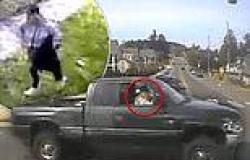
Friday 23 September 2022 12:53 PM Ex-Army officer vents his fury over prosecution of Bloody Sunday veteran linked ... trends now
Thirteen unarmed civilians were shot dead by the 1st Battalion of the British Army's Parachute Regiment on what became known as Bloody Sunday in Bogside, Londonderry on January 30, 1972.
Another 15 people were wounded in the shootings, with one of those injured - John Johnston - dying four months later.
Other protesters were injured by shrapnel or batons, and two were run down by army vehicles during the chaos which broke out on William Street.
The killings, which took place in the space of ten minutes shortly after 4pm, happened during a protest against internment without trial organised by the Northern Ireland Civil Rights Association (NICRA).
The parade, which involved an estimated 15,000 to 20,000 people, had set off from Bishop's Field in the Creggan area of Londonderry, with plans to end at the Guildhall.
But when the march reached the city centre, those in charge decided to avoid Guildhall and instead walk to Free Derry Corner in Bogside as the route had been blocked by British Army barriers.

An armed soldier attacks a protestor on Bloody Sunday when British Paratroopers shot dead 13 civilians on a civil rights march in Londonderry
However, several demonstrators diverted from the main group at Rossville Street and continued to where a barricade had been erected on William Street to prevent approaches to Guildhall.
Those involved began throwing stones towards the soldiers at around 3.40pm, and the Regiment responded by firing plastic bullets, CS gas and spraying demonstrators with water cannons.
In the Saville Inquiry, which investigated the circumstances of Bloody Sunday, Lord Saville said soldiers from the Royal Green Jackets 'acted with restraint in the face of the rioting at this barrier and deployed no more than properly proportionate force in





